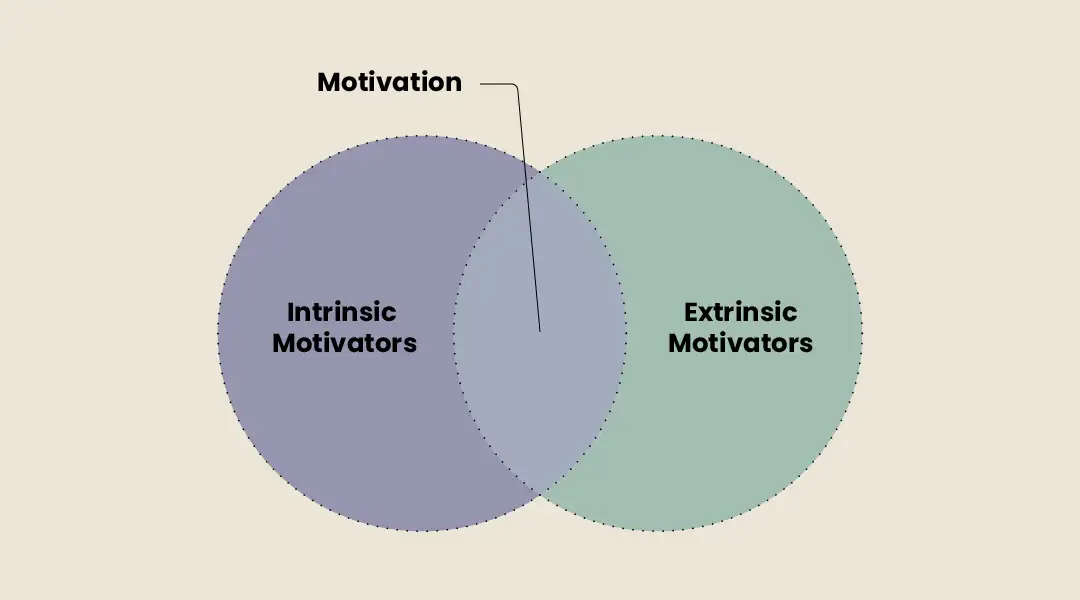Have you ever wondered about the difference between motivation and employee engagement? Are they distinct, and do they really matter? Let’s delve into this topic and provide some context. In essence, successful management entails knowing how to properly motivate a team and its individual contributors. In this article, we will provide a brief overview of employee motivation theories and workplace principles and how they can cultivate and promote employee engagement.
Understanding Motivation and Employee Engagement
Motivation, a branch of psychology, explores the conditions responsible for variations in intensity, persistence, quality, and direction of ongoing behavior. What factors cause individuals to act, giving their extreme effort or barely taking notice?
Employee engagement is not a theory of motivation per se. Instead, it is a desirable outcome resulting from well-crafted employee experiences. The employee experience encompasses various factors, including those that motivate (or demotivate) employees. In essence, to achieve high levels of employee engagement, we must leverage elements of employee motivation.
Motivation Theories
Over time, various theories have emerged to explain what motivates humans in a general sense. In the employment context, early in the 20th century, researchers focused on helping employees in manufacturing environments with issues like alertness and vigilance, crucial for safety and wellbeing. However, as economic needs evolved, organizational psychologists began exploring intrinsic motivators, personality traits, goal setting, and self-determination.
Notable early workplace theories included: Person as a Machine; Person as a Scientist; Needs vs. Drives; Maslow’s Hierarchy of Needs; Skinner’s Behaviorism; Herzberg’s Two-Factor Theory, among others. More recently, researchers have studied Equity Theory; Goal Setting; Person as Intentional; Self-regulation through feedback loops, and other constructs. Some even explore whether we possess inherent motivational traits from birth and if those traits can be measured.
A Simple Framework
To effectively strategize motivation, our research suggests classifying motivators into two categories: extrinsic and intrinsic. Then, we recommend using Maslow’s hierarchy of needs and Herzberg’s Two-Factor theory to refine motivation plans further.
Extrinsic and Intrinsic Factors
From these various theories discussed above, we can distill workplace motivation into two basic categories.
- Intrinsic motivators: These factors influence behavior and are internal to the individual’s personality. For example, job fit and value alignment are critical intrinsic elements. Our Engagement MAGIC® model identifies other impactful intrinsic motivators: meaning, autonomy, growth, impact, and connection. Our research shows that the most important intrinsic motivator is a sense of belonging
- Extrinsically, we find factors like pay/compensation, external recognition, prestige, and career advancement. Pay is the most used extrinsic motivator, which we’ll explore in more detail.
Grouping motivators into these two categories provides managers with an organizational framework to contemplate their motivational efforts. Although extrinsic factors are more within an organization’s control, intrinsic motivators tend to have a more substantial and lasting impact on positive employee behaviors and increased engagement levels.
Maslow’s Hierarchy of Needs
After categorizing motivators, understanding and applying Maslow’s hierarchy of needs and Herzberg’s Two-Factor theory can guide motivation strategies further.
Maslow’s hierarchy describes five categories of human needs, arranged in a hierarchical order:
- Physiological: The most basic needs vital for survival, such as food, water, shelter, and sleep.
- Safety: Needs encompassing protection from harm and danger.
- Love and belonging: Needs related to social interaction, affection, and love.
- Esteem: Needs involving self-esteem and the esteem of others.
- Self-actualization: The highest level of need, reflecting the desire to achieve one’s full potential.
This hierarchy provides a valuable framework for companies to understand and address their employees’ motivational drivers and enhance employee engagement. By recognizing the different levels of human needs, organizations can tailor their strategies to meet these needs effectively.
By aligning their practices with Maslow’s theory, organizations can create a work environment that not only motivates employees but also fosters a deep sense of purpose and commitment to the organization’s success.
Two-Factor Theory
Frederick Herzberg expanded on Maslow’s framework to create a theory applicable in work settings. Herzberg proposed that workplace motivation consists of “Motivators” and “Hygiene” factors.
Hygiene factors include pay and benefits, job security, working conditions, interpersonal relationships, and job title. These factors are considered employee satisfaction elements, and addressing them is crucial before considering higher-order motivators. While hygiene factors may not directly motivate employees on their own, neglecting them can lead to demotivation and decreased satisfaction.
On the other hand, motivators encompass meaning in one’s work, recognition for achievements, growth opportunities, responsibility and autonomy, personal development, and a sense of accomplishment. These factors have a more profound impact on motivating employees intrinsically and driving their engagement.
By ensuring high levels of employee satisfaction through addressing hygiene factors, we lay the foundation for improving employee engagement. Only when employees’ basic needs and satisfaction are met can the impact of motivators be fully realized. The graphic below provides a visual representation of this concept, illustrating the relationship between hygiene factors, motivators, and employee engagement.
Pay as a Motivator for Employee Performance
Now, let’s address the highly debated issue of pay as a motivating factor. While money is often viewed as a universal incentive to drive harder and smarter work, its effectiveness depends on several factors.
Benefits of Using Pay as a Motivator:
- Attracting and retaining talent: Offering competitive pay can attract and retain skilled employees.
- Signaling value and recognition: Paying employees well shows appreciation for their contributions.
- Increasing effort and productivity: Performance-based pay can encourage employees to exceed their goals.
- Aligning interests and incentives: Paying based on organizational outcomes fosters teamwork and collaboration.
Drawbacks and Limitations of Using Pay:
- Expense and sustainability: Pay increases can strain an organization’s finances if not linked to performance.
- Reducing intrinsic motivation: Overemphasizing pay may undermine employees’ internal drive for meaningful work.
- Creating competition and conflict: Ranking employees based on pay can lead to unhealthy competition.
- Unfairness and demotivation: Subjective pay criteria can create perceptions of injustice among employees.
We know that employee compensation is a complex issue and pay (on its own) is usually not enough to motivate employees effectively. While pay is a valuable tool, it should be balanced with other intrinsic and extrinsic motivators to effectively drive employee performance.
Relationship to Employee Engagement
Employee Motivation is the energy employees have on a day-to-day or minute-to-minute basis to exert physical, mental, or emotional effort and energy into their work; it is the force that prompts employees to act.
Employee Engagement is an outcome of a properly motivated team. It is that emotional state where we feel passionate, energetic, and committed toward our work. In turn, we fully invest our best selves in the work that we do.
To cultivate engagement, leaders must focus on providing the right motivating invitation. This invitation involves aligning the organization with employees’ personality, values, preferences, working environment, and career-defining experiences. By understanding motivation theories and balancing intrinsic and extrinsic factors, leaders can foster employee engagement effectively.
Conclusion
Understanding the employee motivation is crucial for driving performance and engagement. By utilizing a thoughtful blend of intrinsic and extrinsic motivators, organizations can create a positive and productive work environment that keeps employees engaged and motivated over the long term.
At DecisionWise, we specialize in leadership and organization development using assessments, feedback, coaching, and training. Our services, including employee engagement surveys, 360-degree feedback, and life cycle surveys, can help you uncover the factors that drive employee motivation and engagement within your team. With our expertise, you can navigate the complex world of motivation and create a highly engaged workforce for sustained success.






